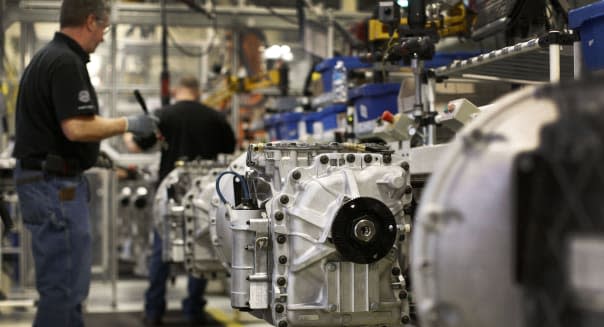Wintry Blast Sinks Worker Productivity in 1st Quarter

By Lucia Mutikani
WASHINGTON -- U.S. nonfarm productivity fell at its fastest pace in a year in the first quarter as output slowed sharply, leading to a jump in labor-related production costs.
Productivity declined at a 1.7 percent annual rate after advancing at a 2.3 percent pace in the fourth quarter, the Labor Department said Wednesday. It was the biggest drop since the first quarter of 2013.
The fall in productivity, which measures hourly output per worker, was in tandem with a weather-driven sharp weakness in the economy during the January-March period
Manufacturing sector hours fell at a 1.4 percent rate. They had increased at a 3.4 percent pace in the fourth quarter.
Economists polled by Reuters had forecast productivity falling at a 1 percent rate.
First-quarter gross domestic product expanded at a 0.1 percent annual rate, the government said in its advance estimate last week, an abrupt slowdown from the fourth quarter's 2.6 percent rate.
However, subsequent data on March trade, factory orders and construction spending suggest the economy actually contracted in the first three months of the year.
%VIRTUAL-article-sponsoredlinks%The trend in productivity, however, remains modestly up. Compared to the first quarter of 2013, productivity increased 1.4 percent.
Growth in output braked to a 0.3 percent rate in the first quarter, also the weakest pace in a year. Output had increased at a 3.8 percent rate in the fourth quarter.
Factory output grew at an only 1.8 percent pace, sharply slower than the 4.7 percent rate logged in the fourth quarter.
With overall output slowing sharply because of the adverse weather conditions labor-related production costs jumped.
Unit labor costs, the price of labor per single unit of output, surged at a 4.2 percent rate after falling at a 0.4 percent rate in the fourth quarter. It was the biggest rise in unit labor costs since the fourth quarter of 2012.
Economists polled by Reuters had expected unit labor costs to increase at a 2.6 percent rate. Despite the rise last quarter, there was little sign that wage inflation was igniting.
Unit labor costs rose only 0.9 percent compared to the first quarter of 2013.
A government report last week showed labor costs increased at their slowest pace in more than two years in the first quarter.
Slack in the jobs market is suppressing wage inflation, keeping overall price pressures in the economy benign.
